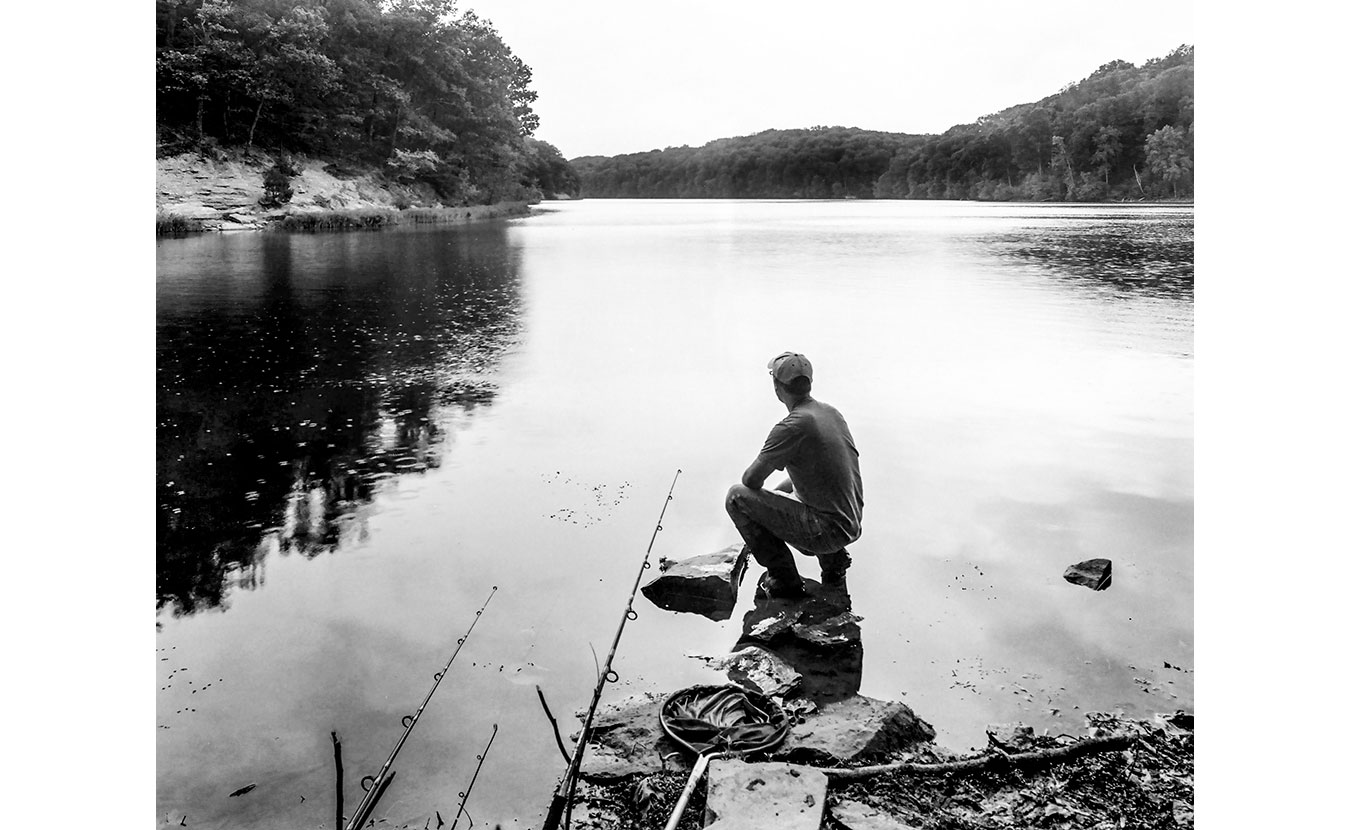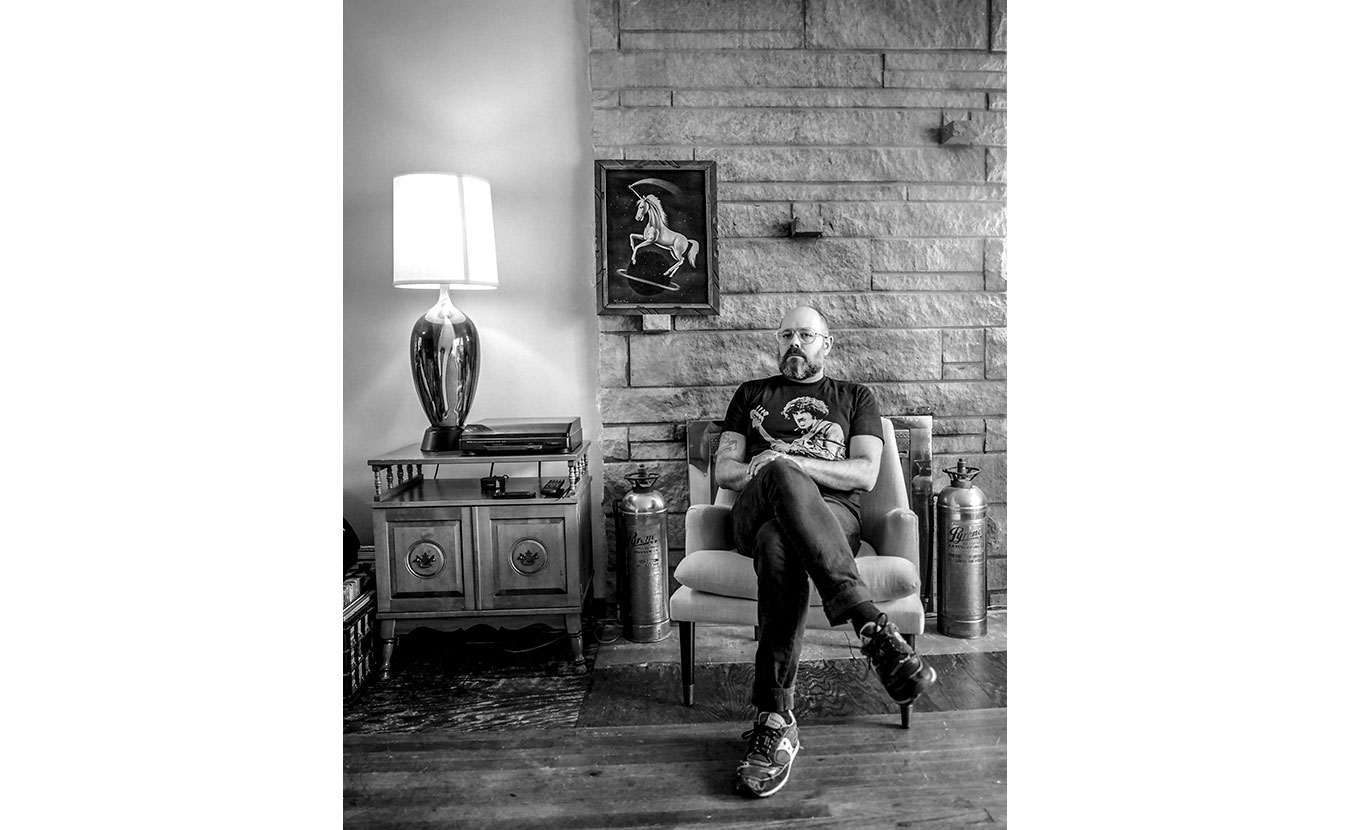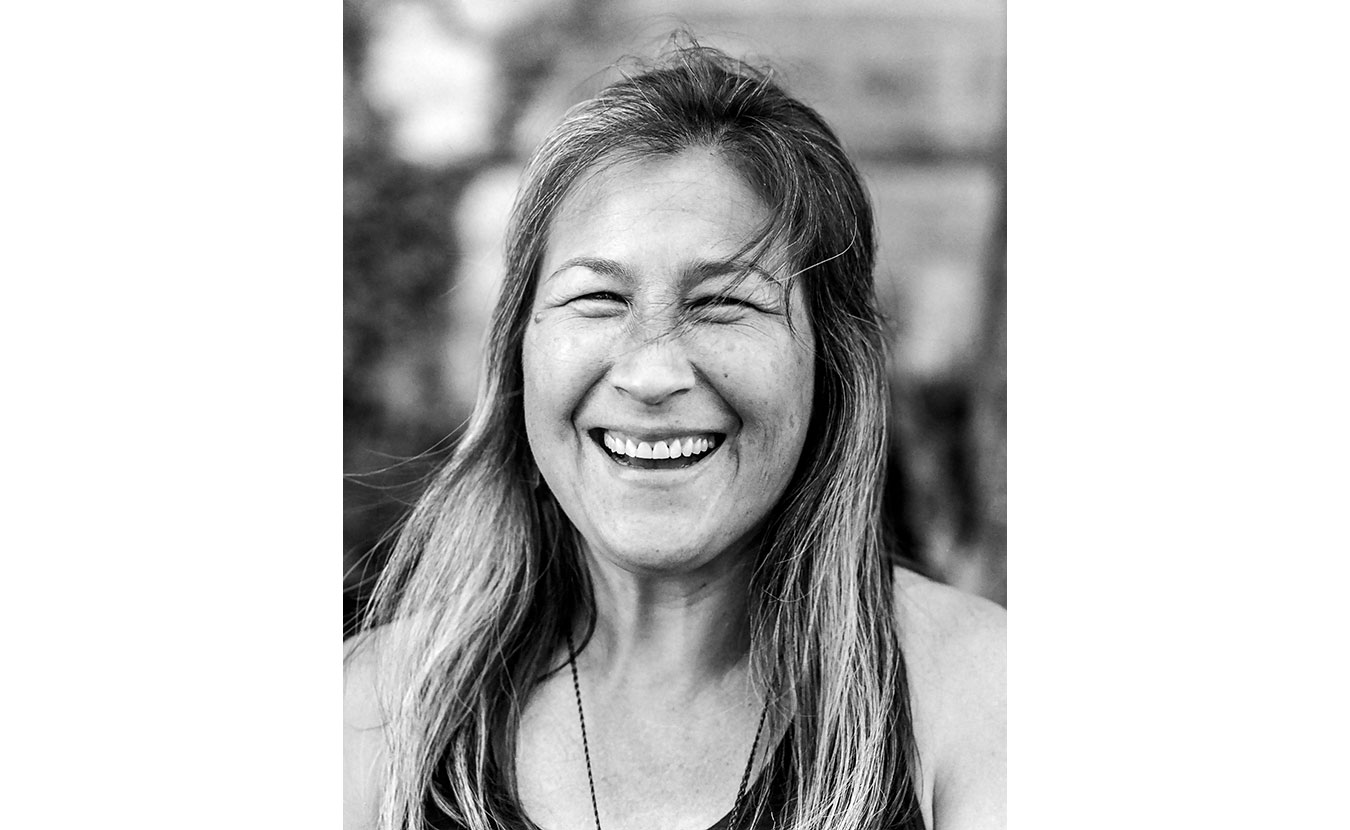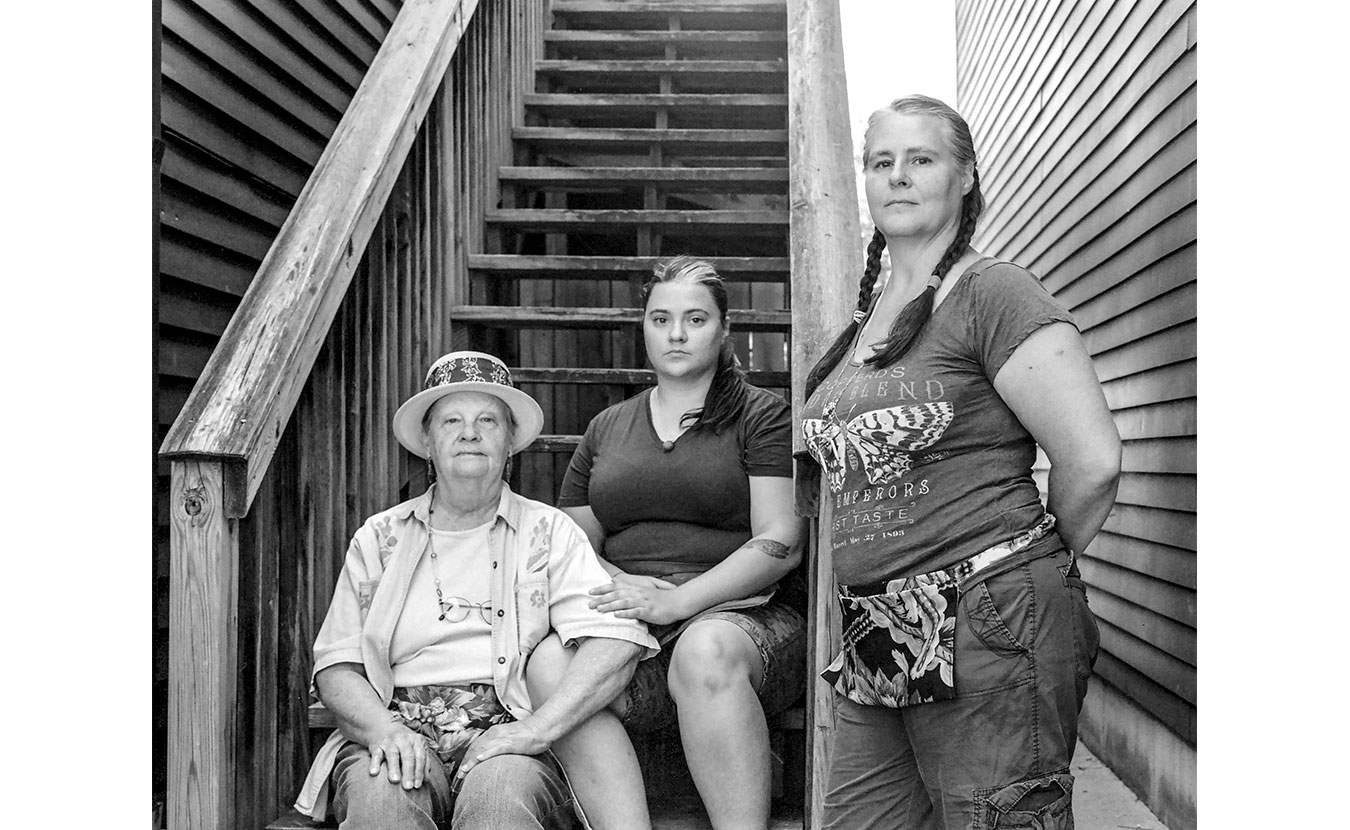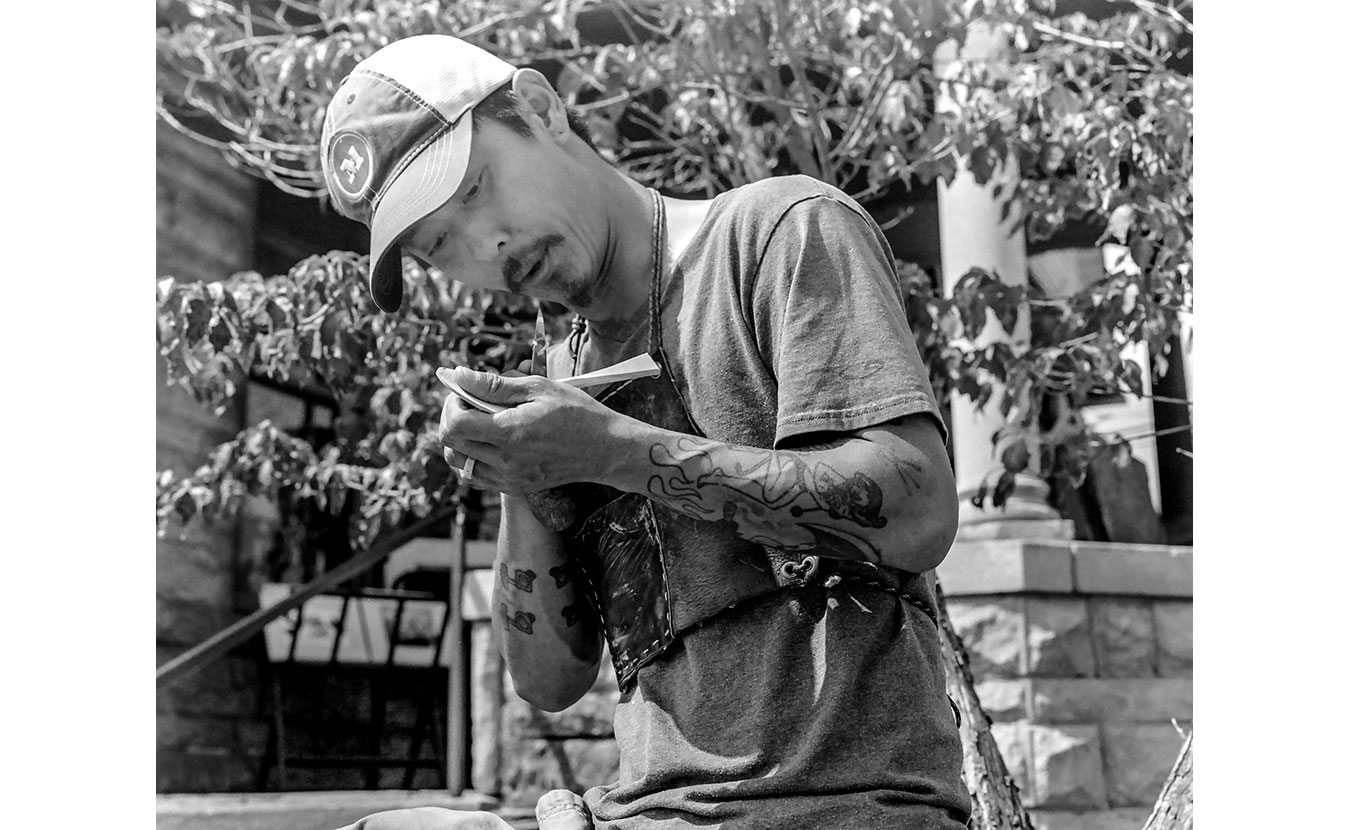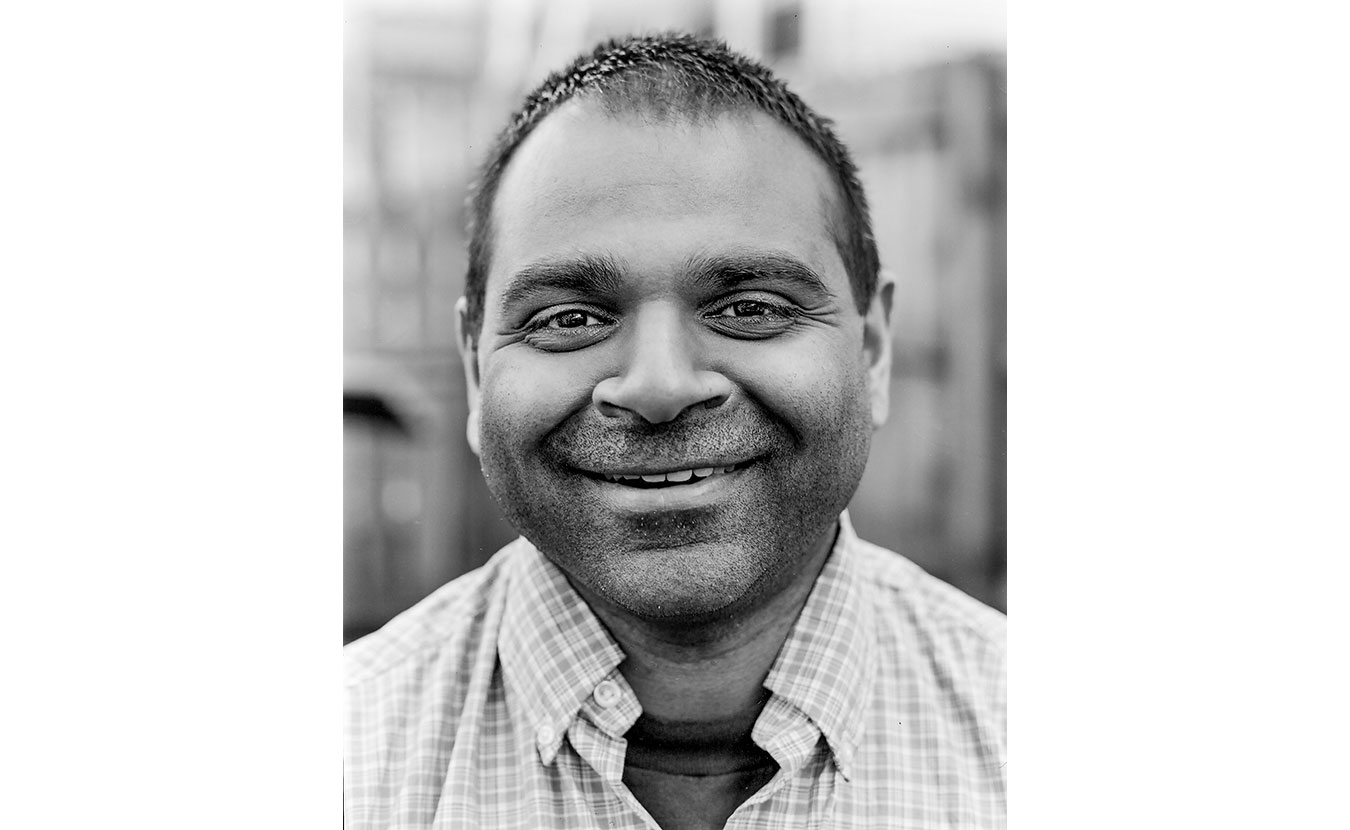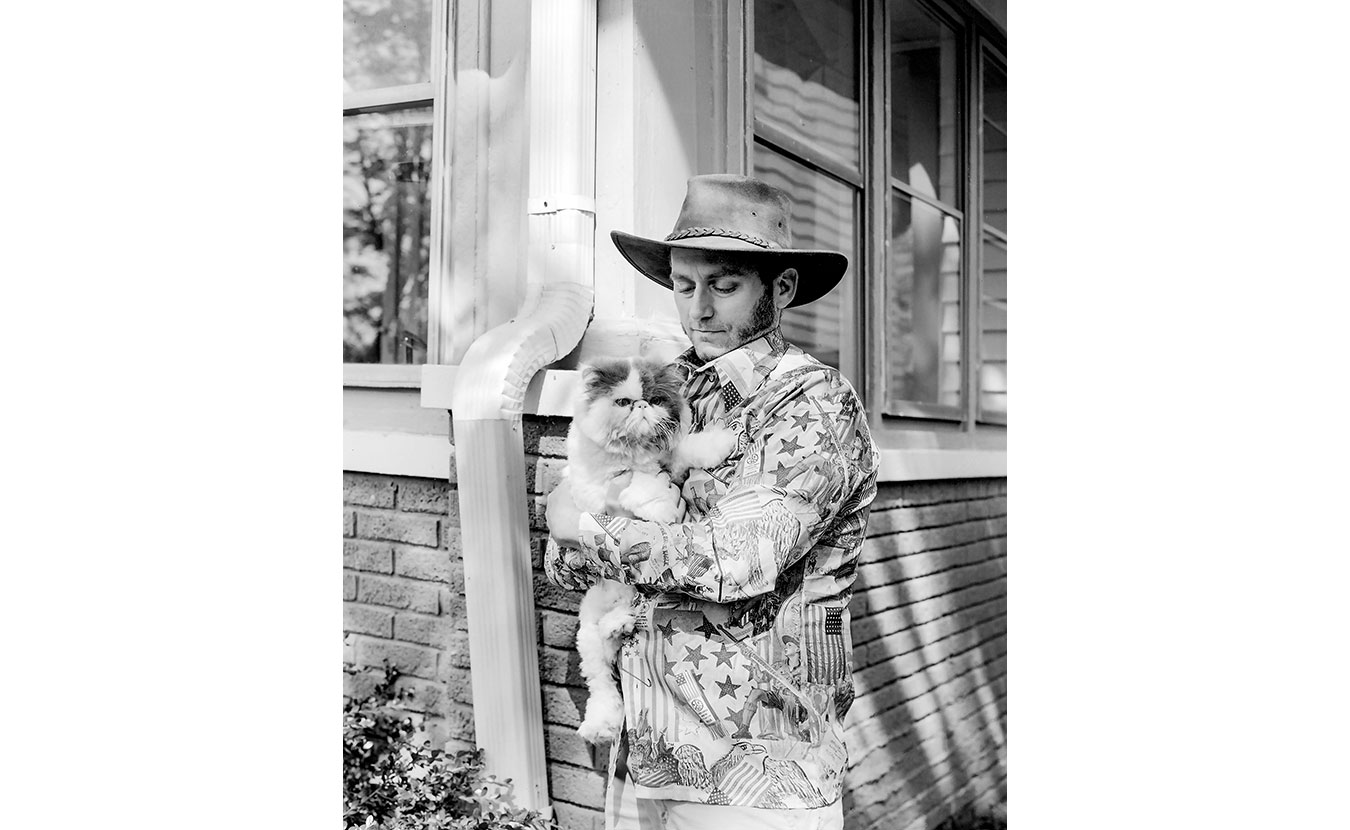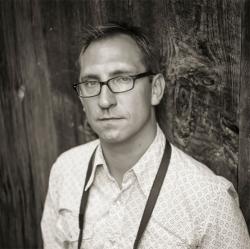The third and final part of this series (part 1 was published in February) has been the most challenging for me. I have never really considered myself a portrait photographer. So tackling an entire series of portraits with my 4×5 field camera seemed daunting and a bit anachronistic, given that the vast majority of the portraits we make today are instantaneous creations on our cellphones.

Photographer Adam Reynolds sets up a photo at the 4th Street Festival of the Arts and Crafts as Ron Bronson looks on from the WFHB table. | Limestone Post
Much like with the images in “Places” and “Things,” I wanted to offer the viewer a diverse array of people in the photographs, a reflection of Bloomington’s own diversity. I also wanted to give a broad range of portraiture types: individual and group, posed and candid, closeup and full-body portraits. I even included both formal and environmental shots, such as a more symbolic portrait of a friend fishing at Lake Griffy. While we cannot see the subject’s face in the photograph, the serene lake he looks out on is, in a sense, a reflection of who he is as a person.
The biggest challenge of making these portraits was the time involved in setting up each image with the large-format camera. No longer was I working with subject matter that was inanimate and had all the time in the world for me to carefully compose my shot; now I was working with an actual person who needed to participate in the process. Initially, I relied on friends as subjects as I grew more accustomed to making portraits before I moved on to strangers on the streets of Bloomington.
While large-format portraiture has its challenges, it has benefits beyond the amount of detail the 4-by-5-inch negatives are able to capture. It is a much more collaborative process. People are naturally curious about this antique-looking camera (although I have owned my modern Tachihara for nearly two years), so they are more readily willing to sit for a portrait. There is a lot more interaction between the photographer and the subject because the time involved in setting up each shot allows the two to converse and feel more comfortable with each other. Perhaps the biggest benefit, though, is that the photographer is not hiding behind the camera’s viewfinder at all when they are actually taking the picture, which allows them to talk casually as they hold the shutter-release cable in hand. This makes the subject feel more comfortable and at ease and helps the photographer patiently wait for them to reveal a part of their authentic selves before … click!

![Katherine Thomas sits outside of the Monroe County History Center. | Photo by Adam Reynolds [Click arrows above for more photos.]](https://limestonepostmagazine.com/wp-content/uploads/2017/09/People3.jpg)
